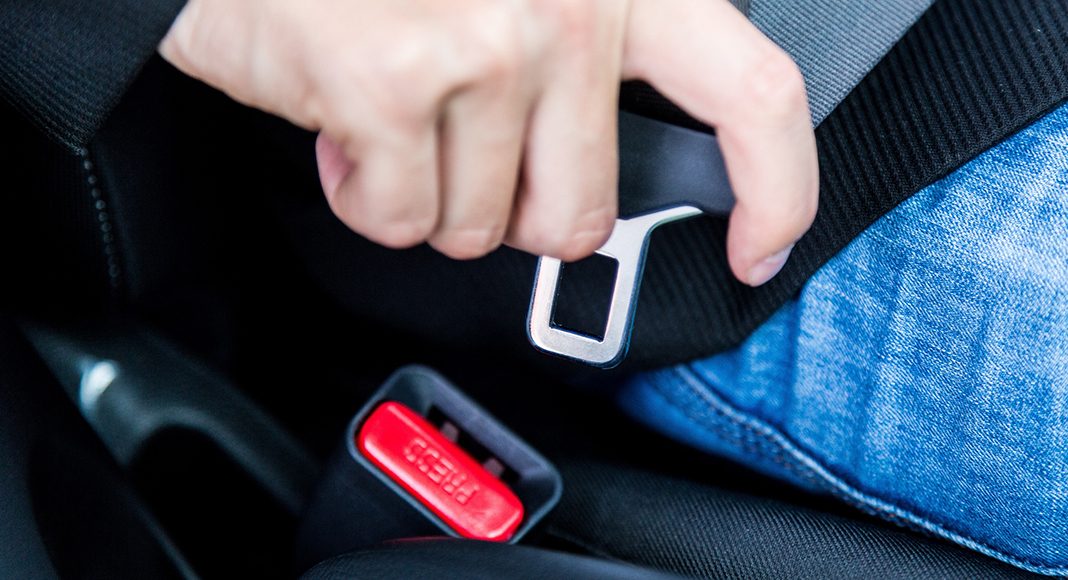It’s one of the most basic rules of safe driving and one of the easiest ways all drivers can help avoid injury—or worse—in the event of a crash.
Yet, nearly 27.5 million people still do not buckle up. NHTSA data shows there were 10,428 unbuckled passenger vehicle occupants killed in crashes in the United States in 2016. Excuses for not wearing a seat belt range from seat belts being uncomfortable to people finding them “unnecessary” for a short trip. But, when it comes to safety there should be no excuse, especially when you consider that, for adults and older children, wearing a seat belt is one of the most effective ways to save lives and reduce injuries in crashes.
This week over 10,000 law enforcement agencies nationwide are participating in the National Traffic Highway Safety Administration’s (NHTSA) Click It or Ticket campaign, which runs May 21 to June 3.
“Safety is our top priority, and this department is proud to stand with local law enforcement officials to help spread the word about the importance of buckling up,” said U.S. Transportation Secretary Elaine L. Chao.
To coincide with the Click It or Ticket campaign, here are 10 good reasons to buckle up, every trip.
- Seat belt use is the single most effective way to stay alive in a crash.
- Wearing a seat belt is the best defense against other drivers. In other words, even if you consider yourself to be one of the safest drivers around, there are impaired, aggressive and distracted drivers on the road who could cause a collision at any time.
- Don’t wear a seat belt and you’re 30 times more likely to be ejected from your vehicle during a crash. More than three-quarters of people ejected during a fatal crash die from their injuries.[i]
- In 2016, seat belts saved an estimated 14,668 lives of occupants aged five and older. If all passenger vehicle occupants aged five and older involved in fatal crashes had worn their seat belts, an additional 2,456 lives could have been saved in 2016 alone[ii].
- If you wear a seat belt while riding in the front seat of a car, your chances of obtaining a fatal injury in a crash are reduced by 45 percent[iii].
- For drivers who think pickup trucks keep them safer in a crash; that’s not true. In 2016, 61 percent of pickup truck occupants killed in collisions were not wearing a seat belt. That’s compared to 42 percent of passenger car occupants who were not wearing seat belts when they were killed[iv].
- Air bags are designed to work with seat belts, not replace them. So, if your car has air bags that doesn’t mean it’s safe for you to ride unbuckled.
- If you slip your seat belt under your arm because you find it uncomfortable otherwise, you could be increasing your risk of in injury. Seat belts are designed to be worn with the lap belt and shoulder belt secured across the pelvis and rib cage. The reason for this is that those areas are better able to withstand crash forces than other parts of the body. The shoulder belt should be placed across the middle of the chest, away from the neck. The lap belt should rest across the hips, not the stomach.
- If you’re sitting in the back seat, your seat belt is just as necessary. Forty-seven percent of all front-seat passenger vehicle occupants killed in crashes in 2016 were unrestrained, but 57 percent of those killed in back seats were unrestrained[v].
- Research shows that children whose parents buckle up are much more likely to buckle up themselves. So, if you’re a parent or caregiver, wearing a seat belt not only keeps you safe but helps keep your children safe in the future too.
See eDriving’s Best Practice Guides for more tips on everything from sharing the road to personal security.
[i] Centers for Disease Control and Prevention (CDC)
[ii], [iii], [iv], [v] NHTSA



















